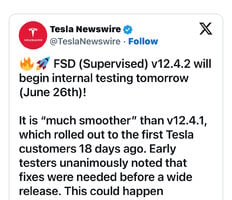From the SAE document: (
https://ca-times.brightspotcdn.com/54/02/2d5919914cfe9549e79721b12e66/j3016-202104.pdf)
(some paraphrasing done for brevity)
Essentially they require the fallback user be available to take over "within sufficient time to respond appropriately" but make no comment as to what that time frame is. They also talk about the user being 'receptive to evident system failures" that the system may not recognize yet include remote control as an acceptable means of fallback support meaning the fallback user would have no way of knowing about such system failures.
Basically, the '10 seconds' everyone keeps citing here is a completely made up number and the SAE document itself is a bit contradictory as to what the requirements are. Of note, there is no mention of driver monitoring or of what kinds of activities may or may not be appropriate.



